William McKinley Jr. was born on January 29, 1843, in Niles, Ohio. As America’s 25th president, he guided the country during the Spanish-American War, expanded our overseas territories, and promoted rapid economic growth.
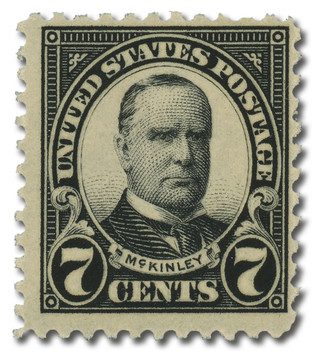
McKinley was the seventh of eight children. At the age of 10, his family moved to Poland, Ohio. From an early age, McKinley understood the importance of a good education. He studied hard through childhood and as a student at Allegheny College in Meadville, Pennsylvania. However, he fell ill and left the college after just one term. Upon returning home and regaining his health, McKinley worked as a postal clerk and later a teacher.
Shortly after the Civil War broke out in 1861, McKinley joined the Poland Guards, which later became the 23rd Ohio Infantry. He enjoyed the soldier’s life and often wrote letters to his hometown newspaper praising the army and the Union cause. It was at this time that McKinley first met Rutherford B. Hayes. Impressed with how Hayes led his men, McKinley established a lifelong friendship with him.

McKinley participated in battles at Carnifex Ferry, Antietam, Kernstown, and Cedar Creek. When the war was over, McKinley’s superiors urged him to join the peacetime army, but he declined, seeking to start a career in law.
Upon returning home, McKinley began studying in a local lawyer’s office before attending Albany Law School. He was admitted to the bar in March 1867 and set up a small office in Canton, Ohio. McKinley’s legal work proved prosperous, as he was soon able to buy an entire block of buildings on Main Street that provided him with consistent rental income for several decades. In the coming years, McKinley won some high-profile cases and entered politics. He served in Congress and on the House Ways and Means Committee, where he created the McKinley Tariff of 1890.
While still serving in Congress, many people encouraged McKinley to run for governor. In 1891, he won that election by 20,000 votes, or about 2.7% of all votes. As governor of an important swing state, he was a prominent figure in national politics. In this role, he established an arbitration board to settle work disputes and passed a law that instituted fines on employers who fired their workers for being in unions.
McKinley was among the potential Republican candidates for the 1892 presidential election, but he was forced into a public, neutral role, and encouraged delegates not to vote for him. When Grover Cleveland was elected president, McKinley became the likely candidate for the 1896 election.
While McKinley went about his business as governor, his team traveled the country, building support far ahead of any of his rivals. McKinley also took an unorthodox approach to his campaign. Rather than traveling the nation and delivering speeches, he stayed at home and the people came to him. When they arrived, he delivered speeches on his front porch. As one historian described, “it was, as it turned out, a brilliant strategy. McKinley’s ‘Front Porch Campaign’ became a legend in American political history.” Available to the public every day but Sunday, McKinley received delegations that arrived by railways that offered reduced rates for the trip. In the end, McKinley won 51% of the vote and a large majority in the Electoral College.

Sworn in on March 4, 1897, McKinley delivered a long inaugural address concerning tariff reform, currency issues, and an interest in staying out of foreign affairs. However, he would end up getting America involved in Cuba’s war for independence against Spain, eventually gaining the new territories of Philippines, Guam, Puerto Rico, and Cuba.
McKinley’s other efforts in foreign policy concerned Hawaii, which had been seeking annexation since American and European business owners had seized power from its royal government in 1893. McKinley supported annexation (acquiring and incorporating as a territory) and pushed Congress to side with him, as he feared inaction would lead to a royalist counter-revolution or a Japanese takeover. The president argued, “We need Hawaii just as much and a good deal more than we did California. It is manifest destiny.” He was successful, signing the annexation legislation in July 1898.
The acquisition of these Pacific possessions increased America’s trade position with China. So McKinley encouraged Congress to establish a commission to look into trade opportunities there and create an “Open Door Policy” that allowed all nations to trade freely with China.
On the domestic front, McKinley faced the issues of tariff reform and free silver. McKinley supported a bill that increased tariffs on wool, sugar, and luxury goods. Though they successfully reached agreements on the issue with France, both India and Britain rejected the proposal. With that failing, McKinley decided to support the gold standard, which turned out well, as gold strikes had increased the monetary supply, causing little need for silver coinage.
With his popularity assuring the party to renominate him, McKinley sought a new running mate for the 1900 election, as his first vice president had died the previous year. Theodore Roosevelt had served as assistant secretary of the Navy, fought with distinction in Cuba, and was rising through the Republican Party quickly. McKinley campaigned as he had done the last time, from his home, while Roosevelt toured and gave speeches. In November, McKinley won the largest victory of any Republican since 1872.
Following his March inauguration, McKinley and his wife began a national tour. But when Ida fell ill, they postponed the last stop, the Pan-American Exposition in Buffalo, New York, until later in the year. On September 5, McKinley addressed some 50,000 people at the fairgrounds, with the anarchist Leon Czolgosz among them. The following day, as the president greeted the public, Czolgosz approached and shot him twice in the chest. Upon being shot, McKinley’s first thoughts were of his wife, telling his aides to be careful how they broke the news to her. He then ordered that the mob of people surrounding Czolgosz leave him be.
Initially, doctors thought McKinley’s condition was improving. However, they could not tell that he had developed gangrene internally, which was slowly poisoning his blood. Ida sat by his side throughout it all, and when his condition worsened, she cried that she wanted to go with him. He responded, “We are all going… God’s will be done, not ours.” President McKinley died in the early morning hours of September 14, 1901. His assassin was found guilty and later sentenced to death.
According to one historian, “The nation experienced a wave of genuine grief at the news of McKinley’s passing.” At least 200,000 people passed by his casket as it sat in the Capitol Rotunda and a Canton, Ohio, courthouse. McKinley was later interred at a special memorial in his honor, which was already under construction.
| FREE printable This Day in History album pages Download a PDF of today’s article. Get a binder or other supplies to create your This Day in History album. |
Discover what else happened on This Day in History.


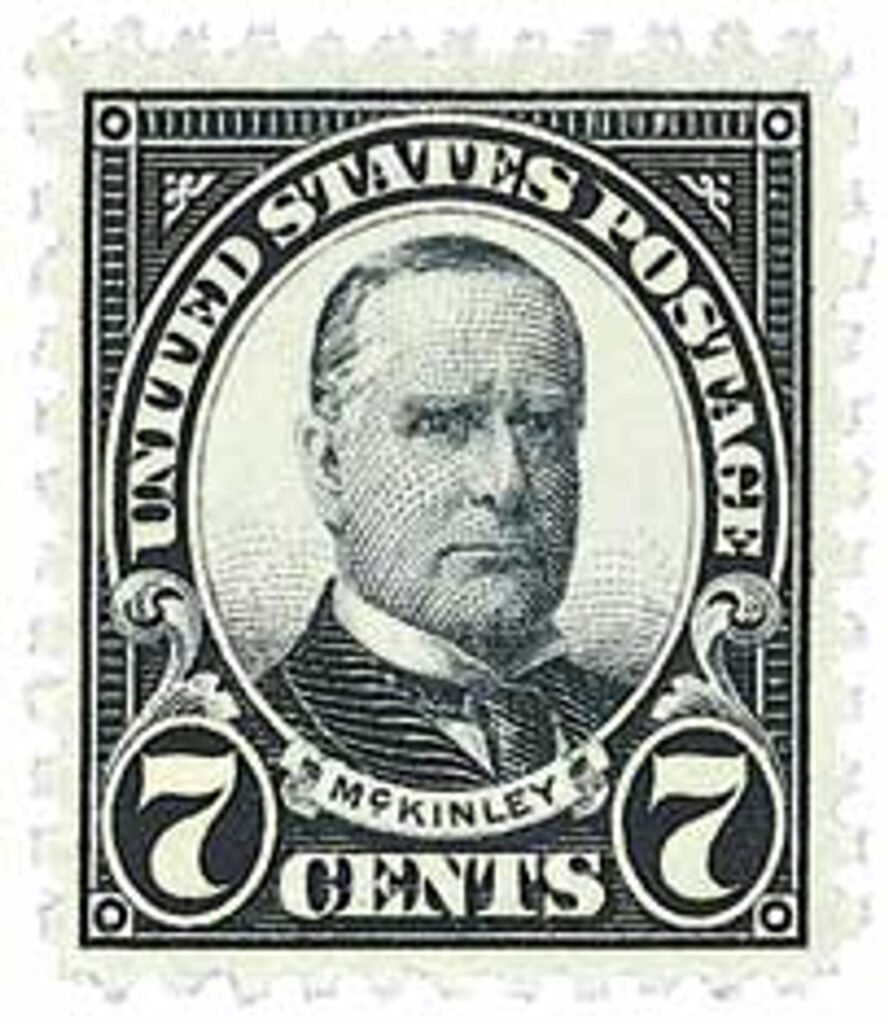
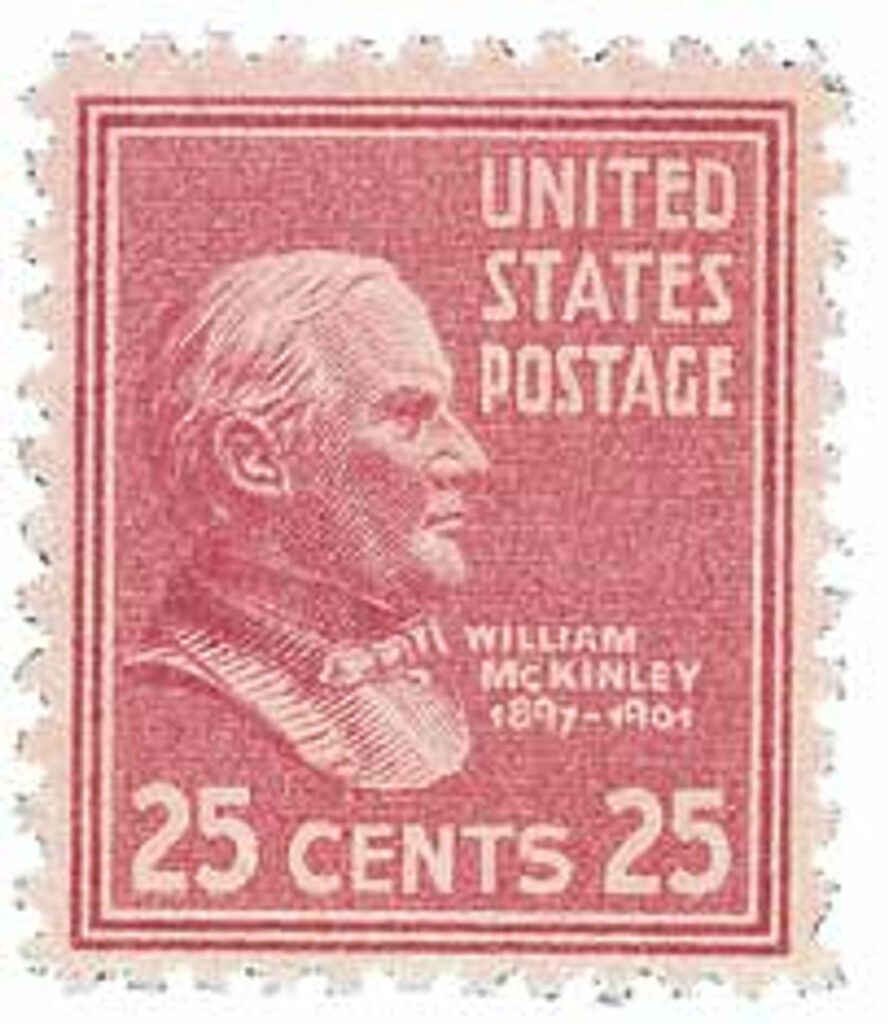
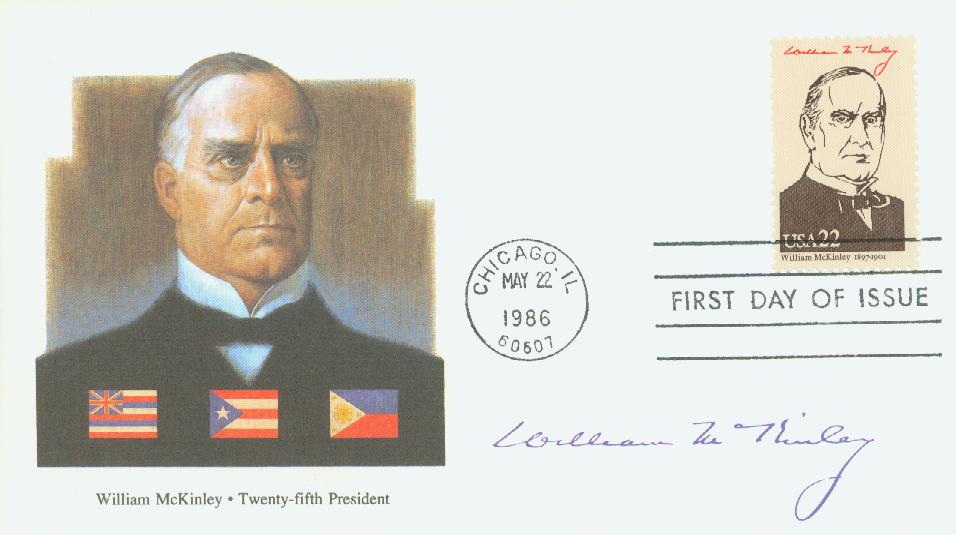
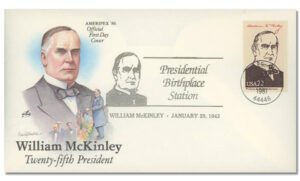
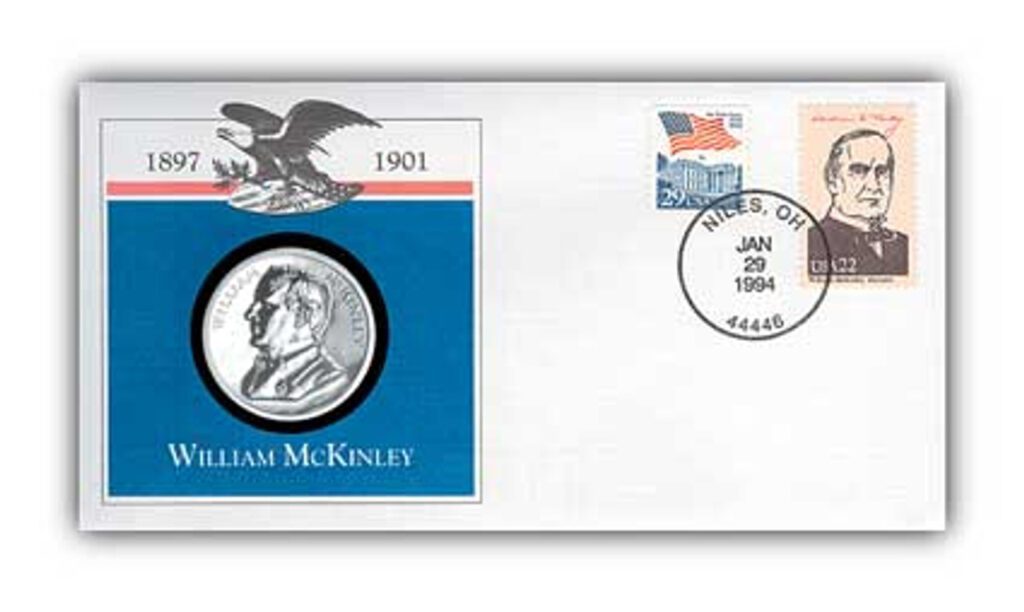
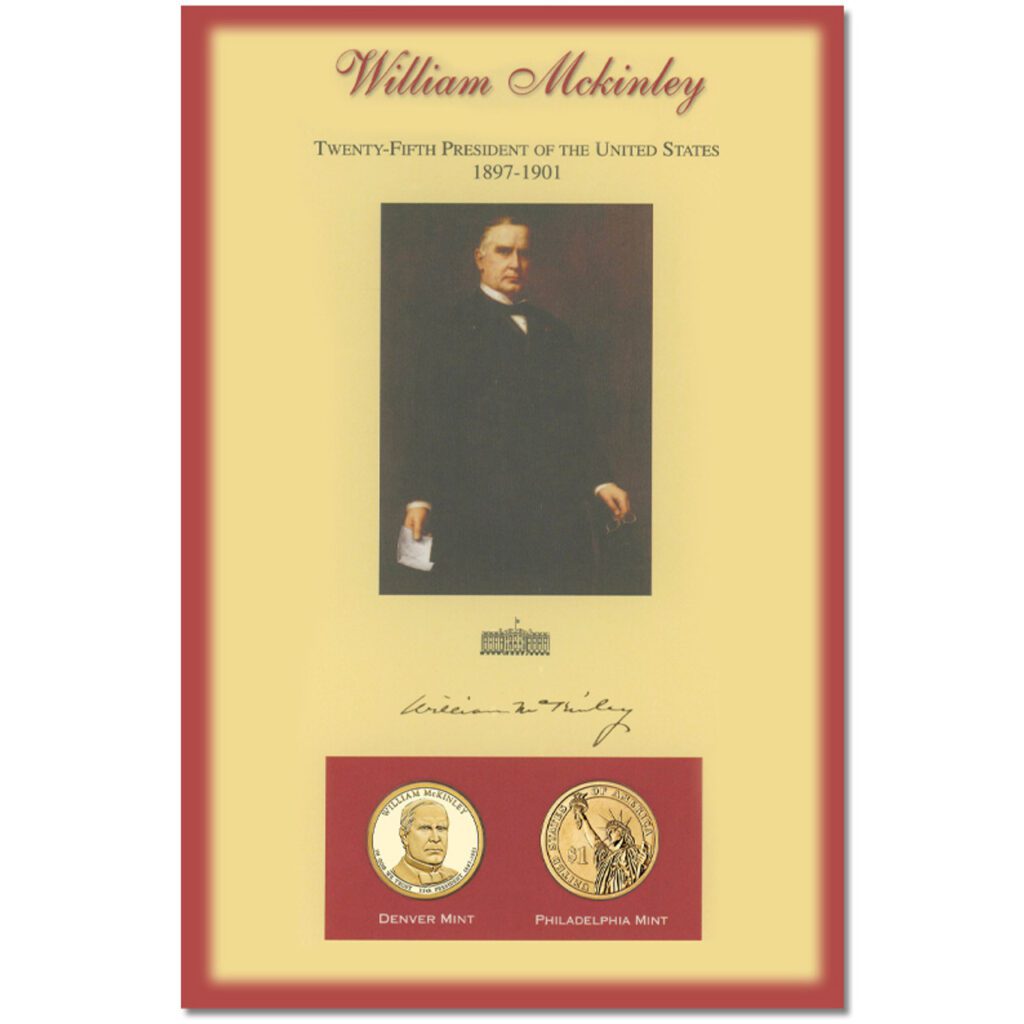

I knew very little about President McKinley except that he was devoted to his wife and he was assassinated but didn’t die immediately. I’m glad to know about his life and his accomplishments. Thank you for your amazing articles.
Let’s reclaim Mount Mckinley.
No need to reclaim it, Danali is still there.